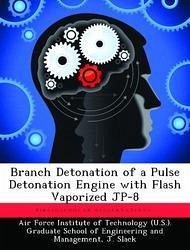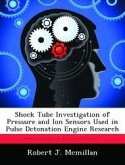Pulse Detonation Engines (PDE) operating on liquid hydrocarbon fuels are limited to operating frequencies of 35 Hz due to long ignition times from low energy ignition sources. This study shows ignition time of JP-8 can be nearly eliminated by igniting a thrust tube using a secondary detonation. A counter flow heat exchanger attached to a thrust tube utilized waste heat from the detonation process to heat JP-8 to supercritical conditions. The fuel flash vaporized upon injection into the air stream of the engine, where a detonation was produced by a spark in a 5 cm diameter, 1.37 m long tube. Part of the detonation produced in the spark ignited tube was branched through a 1.9 cm diameter crossover tube into the head of second thrust tube. A pressure transducer and hydroxyl (OH) sensor measured the combustion event that determined ignition time of the second tube was eliminated. Branch detonation was performed over a range of equivalence ratios ranging from 1.05 to 1.3. Branch ignited thrust tubes have shown a 40% improvement in deflagration to detonation transition (DDT) time and a slight improvement in DDT distance.








